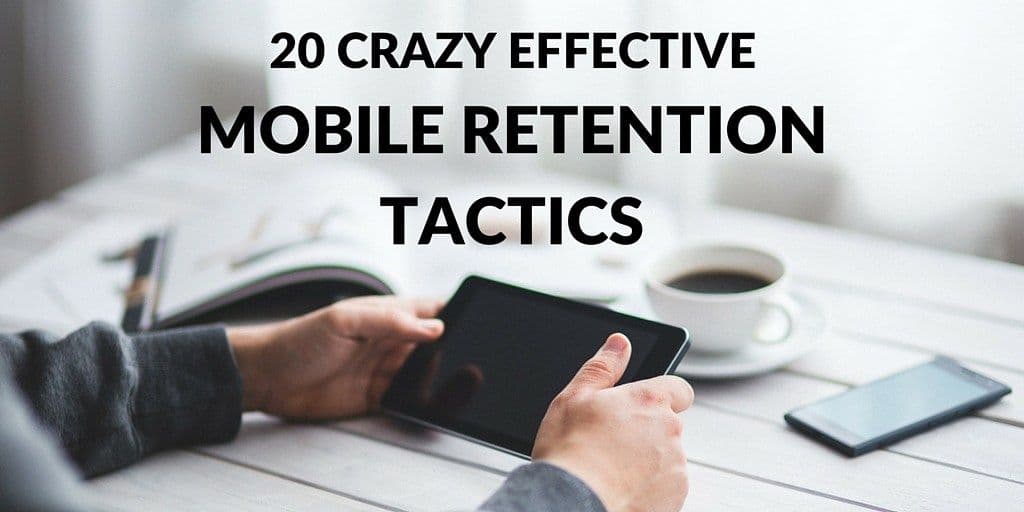20 Crazy Effective Mobile Retention Tactics
There’s always going to be fluctuation, and the only way you can know why it’s happening is by diving a bit deeper into your metrics.
As a mobile analytics company, we live and breathe app retention. We see it as the true foundation of growth, without which your app will quickly sink into the ground.
Churn, the natural and eternal enemy of the entrepreneur, is a foe that can come from anywhere—apathy, competitors, clunkiness, you name it. Fighting it is a constant battle, waged from the very moment users download your app and through every single interaction they have with it.
To stand a chance of success, you need to chip away at it all over, improving every angle of your service and product. To help you, here are 20 techniques to improve your mobile retention: from improving the onboarding process, to ways to enhance your product, to re-activating users on the fringes, and everything in between.
Onboarding
Your app’s onboarding is pivotal. The average app loses 77% of its daily active users—in three days. But making improvements to your onboarding process doesn’t just help retain users for a couple of days: the added value that your users see will cascade over the mid and even the long-term.
1. Make it easier to sign up with single sign on.
Registering for an app without single sign-on (SSO) is aggravating. Typing on a touch screen, flipping through menus for the right symbols, having to remember a new password for an app about which you know nothing—and, of course, there are the usual questions about security. 87% of combined users, it turns out, actively prefer using their Facebook or Google or Twitter accounts to log in:
And if you’re tempted to avoid digital sharecropping anyway, know that 92% of users will also leave a site if they forget their account info—and never come back.
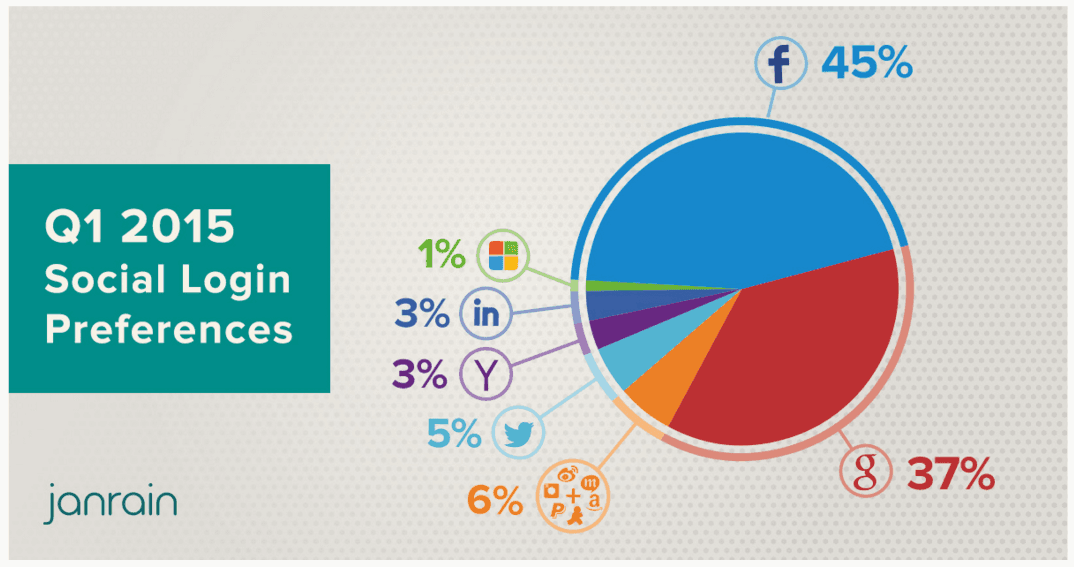
Depending on the languages your program is written in, however, implementing SSO, especially across different platforms, can be very time-consuming. That, fortunately, is a pain point that identity-as-a-service tools like Auth0 are competing to fill: Auth0 lets you generate a social login, enable strict two-factor authentication, and do it all cross-platform with only a couple lines of code.
2. Onboard with a personal video.
Dropping your new users into an unfamiliar dashboard with no guidance is the worst thing you can do. The next worst is giving them a cold, sterile introduction. A really great onboarding experience, on the other hand, is about bringing users to their personal Aha! moments—the moments where their uncertainty fades, and the value of your app snaps into clear focus.
Fifty-Three introduces its app Paper with a simple yet elegant how-to video. Using video to onboard makes it much easier to bring people to this Aha! moment. You can build a clear walkthrough of your product that shows off its core features in an easy to understand way—for instance, with a screencast, a voiceover, and overlays that show users how to move through your app.
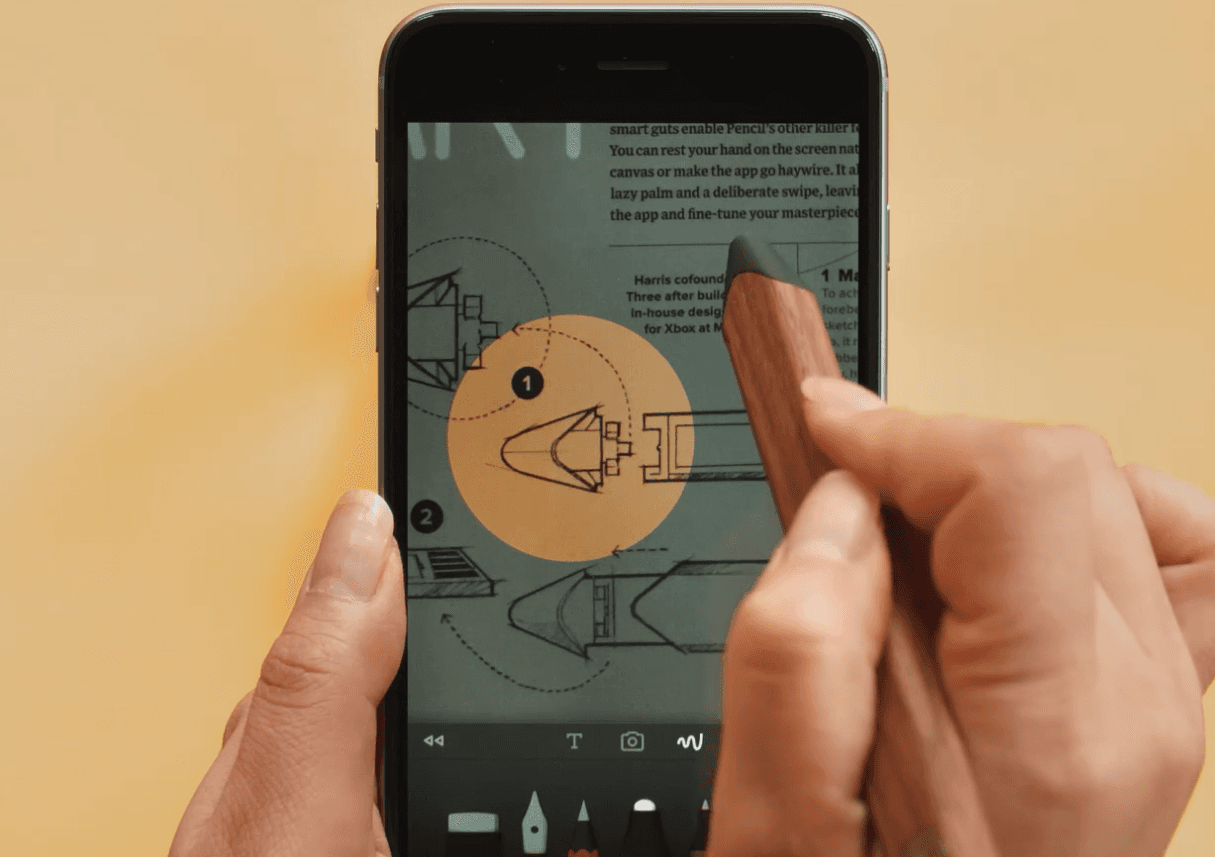
For Wistia founder and CEO Chris Savage, a brilliant onboarding experience does more than get a user comfortable: it can spark a sudden realization that your product is the product for them. To that end, Wistia provides video hosting for businesses with a whole host of analytics tools that will let you see where users tend to stop watching, where they skip through, and what they return to again and again—everything you need to split test and iterate your videos to greatness.
3. User test for ‘Aha! Moments’
Getting users to their Aha! moment is one of the fundamental principles of mobile app development. That’s the moment when a user’s eyes open to the value of your app, when they go from ambivalent to psyched about it.
Instacart watched recordings of users testing out their app to figure out where in the shopping process users really started to see value:
Hmm…. I am going to look for… Well, I definitely need some bananas so let me add two pounds… Wow! This is great! I hope this comes to my area!
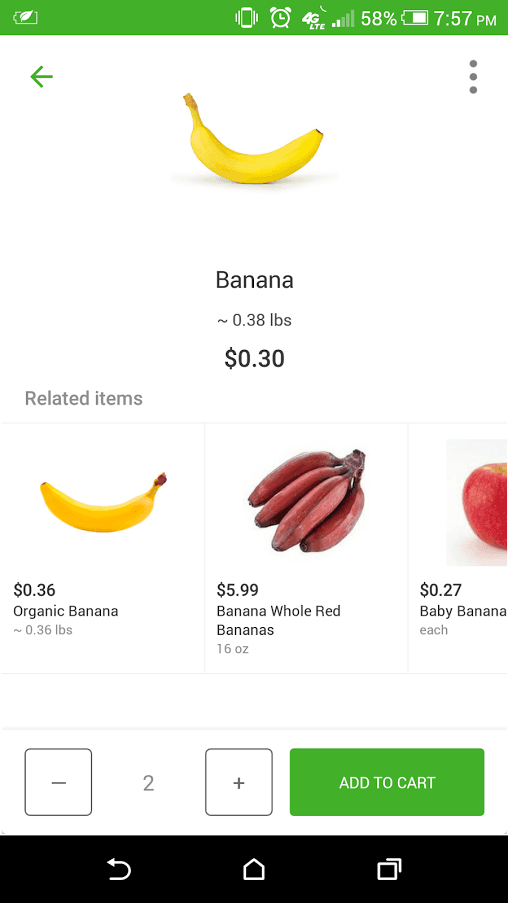
This Aha! moment was something no amount of data could predict. It’s like the Tinder swipe—addictively tactile and (now) endlessly imitated. But oftentimes these Aha! moments are where you least expect them.
A service like User Testing can help you find exactly where people get hooked on your product. You can set up an objective, pick your demographics, and they’ll find people to use your app any way you want—afterwards, you can watch a recording of how it all went down.
4. Optimize your walkthrough.
According to Chamath Palihapitiya, lead of the first “GrowthCircle” at Facebook, apps that want to grow like Facebook need to focus with laser-like intensity on the very first user interactions users—down to the milliseconds.
That means taking an intense approach to refining your onboarding process. If you choose to build a walkthrough or a tutorial, it means analyzing how well each step of that process is doing, testing, and adjusting until you can get it exactly where it needs to be to activate the most users possible.

Experimenting with different UIs, personalizing, localizing, segmenting: there’s so much you can do to create a more effective first experience for your users. If you don’t want to spend a load of time coding all kinds of features, you can use a tool like Appcues and design and split test all kinds of onboarding flow with minimal coding required.
5. Behavioral drip emails
Sending out a sequence of emails to your new users based on a strict schedule or conventional action-based triggers can be effective, but you stand a much better chance of activating your new users if you tighten the focus of your drip emails to bring users to Aha! moments.
Cloud-based file storage system CloudApp could ask you to upload your first file a day after you sign up—because that’s when you traditionally send that email. But they don’t: they send a sequence of emails designed to help you upload your first file if and only if you haven’t yet. This is a way more effective and personal flow:
An email marketing platform like Customer.io makes it easy to set the behaviors you want to encourage and start automating your drip onboarding process. It’s not “dumb” automation we’re going for here: it’s automation that pays attention to the conditions that your users actually face on their way to Aha! moments.
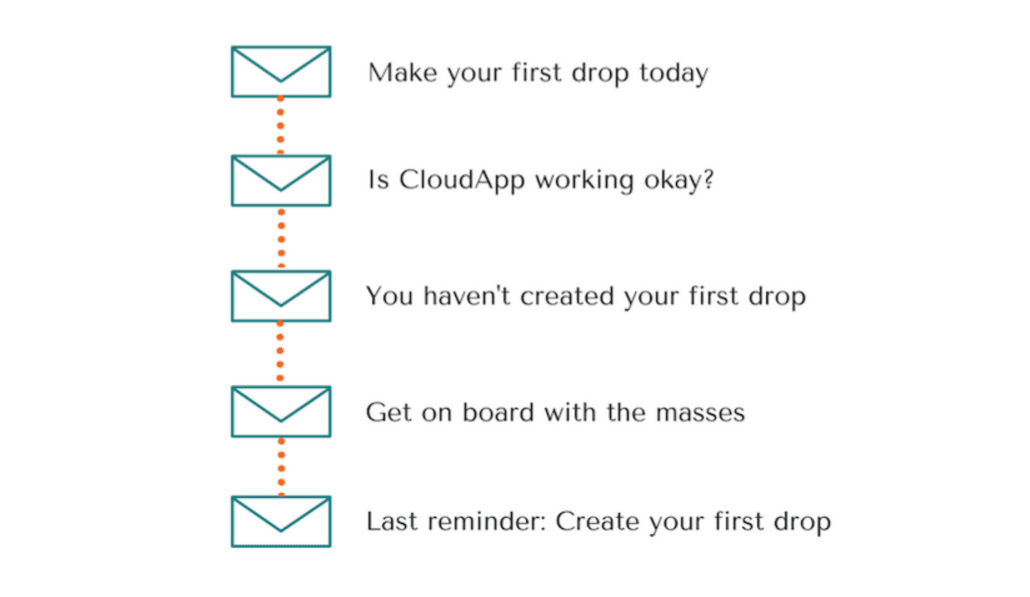
6. Get a backup contact method.
Google, Facebook and other big companies are famous for constantly pestering their users for backup contact methods. Some people don’t understand why:
But there’s a reasonable explanation behind it, and it’s that even email is not an entirely reliable mode of communication.

Something like 30% of HubSpot’s long-term churn was at one point related to one factor: people getting new jobs and losing the email addresses they used before. That’s it. They were perfectly happy with the product, but they no longer had access to that email account.
This is why you need to ask your users for backup means of contact—because just one email address is not enough.
Product
From a total UI overhaul to some newly colored buttons, there’s a lot you can do to your product to try and improve retention. Feel free to push the envelope—you can probably do more than you think—but be careful not to alienate your users. Move quickly, try stuff, get feedback, and fess up when you mess up.
7. Eliminate features from your product.
Once upon a time, there was a humbly-funded little mobile app called Burbn. Inspired by Foursquare and whiskey, users could check in at different locations and earn points, make plans and take and share pictures.
But after looking at their data, the co-founders realized no one was using the check-in features. What people were doing was posting and sharing photos—“like crazy,” they recall.
They tore the app apart, left the photo sharing functionality, and within hours of re-releasing their app as Instagram became the #1 photo app.
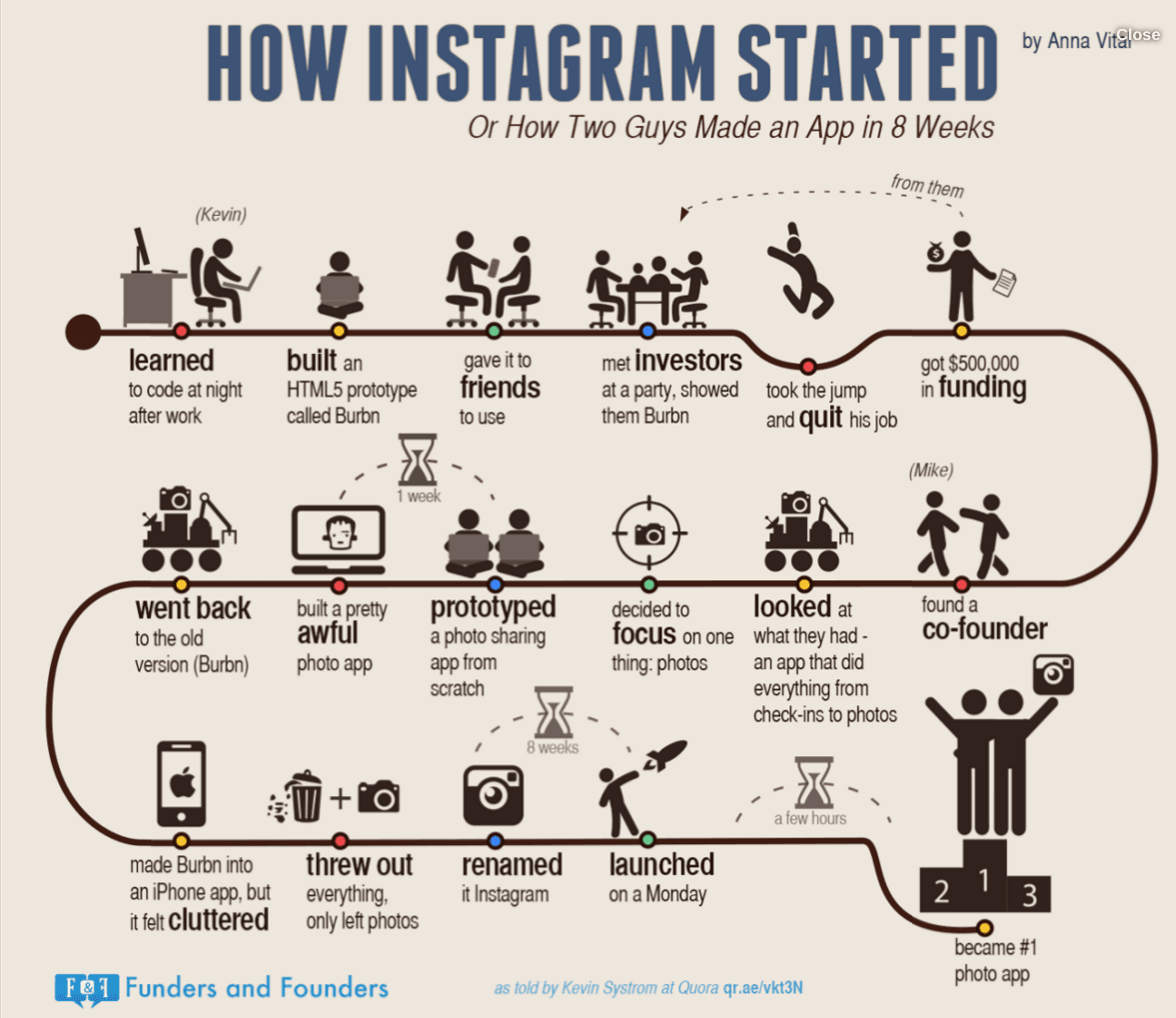
Amplitude offers a fully fledged analytics platform so you can do the same kind of slicing and dicing on your own app: you can visualize your stickiness, retention, and user activity and find out what’s actually going on with your users.
Simplifying your app may seem like a step in the wrong direction, but having the data to back it up is what lets you make incredibly tough decisions about cutting what seem like fundamental features.
8. Layer on features that add core value.
While simplifying is great, it’s not an unbreakable rule. But don’t fall into the trap of thinking “just one more feature” is all you need for a killer app. That’s a quick way to engineer yourself into irrelevancy. Once you’ve achieved product-market fit and identified the core value of your app, you can begin the slow process of layering on features that add to that core value.
Not to say it’s always easy, even when you have it right. When Facebook first introduced the News Feed, they actually faced a huge crisis—700,000 users joined one group demanding a return to the old Facebook. In case you forgot, “Old Facebook” was all about navigating to individual profiles in order to do anything. News Feed completely changed the game, gave Facebook a central hub, and made it what it is today. Here’s Mark Zuckerberg’s original News Feed:
The appeal of Facebook is predicated on knowing what your real life friends are doing. That’s the core value. It’s a testament to the brilliance of News Feed that it’s basically impossible to even imagine using Facebook to keep up with your friends without it. It took the core value of Facebook, and amplified it 10x.

9. Cure feature blindness.
Everyone knows that selective blindness plays a huge role in the web—it’s a large part of the reason why, for instance, banner and sidebar ads don’t get much pull anymore. But when we’re in flow, using tons of different apps and changing windows nearly 37 times an hour at work, we can also lose sight of product features we’re not used to seeing or using. Jackson Noel at Appcues calls this common phenomenon feature blindness.
According to HubSpot product manager Dan Wolchonok, their email add-on app Sidekick was conceived with a major case of it. When users first downloaded Sidekick, many disabled its tracking feature. They didn’t necessarily want to track the very first emails they sent. But later on, when they did, they were suddenly no longer able to find the tool. They were totally blind to it.
The users thought Sidekick was broken, but in reality, HubSpot had just hidden it from them. It was definitely the right move to allow people to initially turn Sidekick off, but there needed to be some kind of later follow up. To solve this, they simply re-checked the box after a few days of it being unchecked and inserted a little reminder:
Suddenly, those users who wanted Sidekick’s email tracking were re-discovering not just the feature, but the value of the entire product.
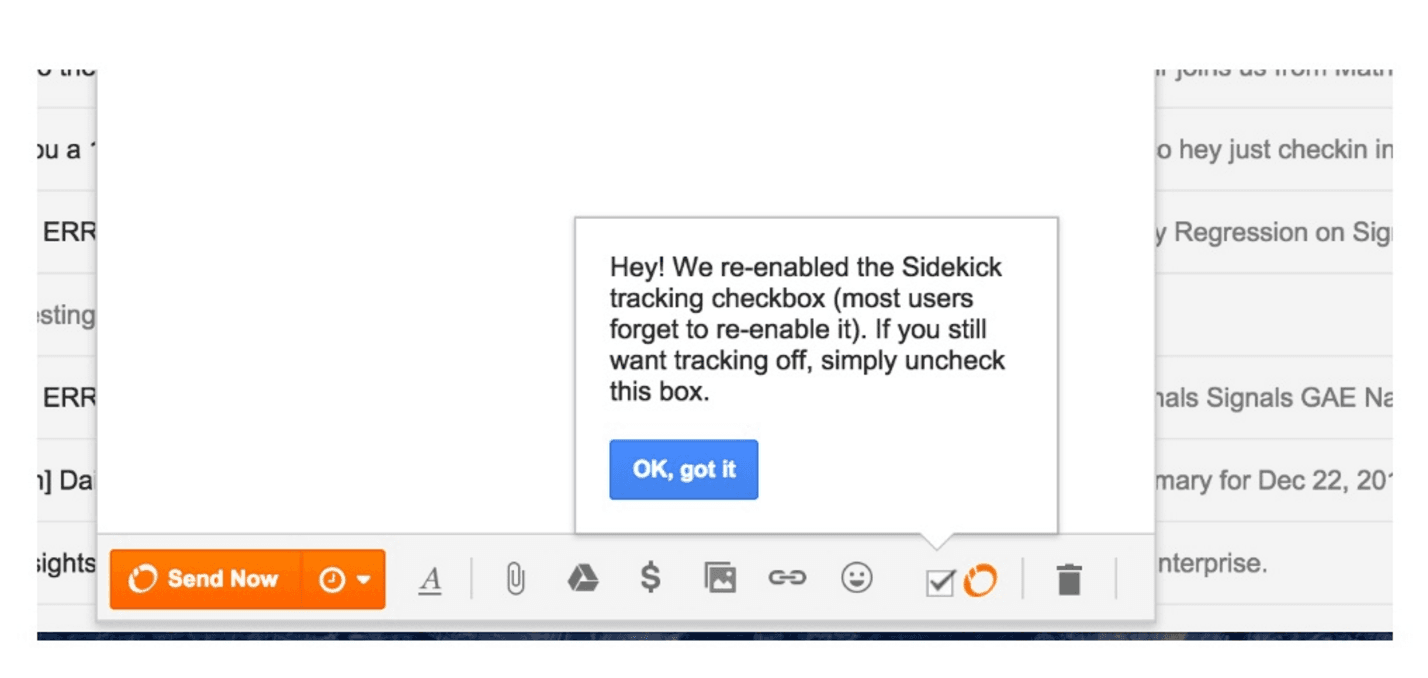
10. Know your financial metrics.
If you’ve looked at your revenue churn numbers before, then you know how hard it can be to understand exactly what’s going on when your revenue suddenly spikes or falls into a valley of despair.
There’s always going to be fluctuation, and the only way you can know why it’s happening is by diving a bit deeper into your metrics. You need to see if you lost a big customer in one cohort, or maybe you gained three at the end of the month, or whatever it may be: the only way to get the complete picture of your churn is to look into individual customer data.
ProfitWell gives you a smooth, comprehensible visualization under which you can access this kind of power. If you’re using Stripe, it’s a really effective way to get automatically updating insights into your company’s financial metrics.

11. Go upmarket.
Going upmarket can be a huge boost to your churn numbers for the simple fact that bigger customers take longer to drop out. Startups go out of business, they pivot, they decide they don’t need you anymore. Big companies take longer to start using something, but when they do, they’re gonna stick around for the value you offer, and they won’t leave unless they find something way better.
If you’ve got a fully individual product right now, even the bare minimum “work features” can multiply your lifetime user value by 20x-30x.
For enterprise customers, what matters most is prioritized support, single sign on, and having the right security qualifications. Get those right, and you’re looking at another 20x-30x increase in lifetime value. It’s easier than ever to do it, so if your product has a place upmarket, get to it.
Support
Creating a good product and activating your users quickly is important, but great support is what’s going to keep those people around for the long haul. Respond to issues quickly, create efficient processes, and communicate what’s going on: these seem like little things but they will go a long way.
12. Prioritize your email with workflows.
You’re probably not competing with the big corporations on price or efficiency: you’re competing with them based on the idea that despite all the factors against you, you’re still the best choice. The best way to prove that is by being the most supportive company out there.
iDoneThis was able to cut their monthly churn from 10% to 3% by prioritizing their support, and they didn’t have to hire an army of service reps to do it.
Instead, they used a combination of Help Scout and simple IFTTT actions to make sure that they were always responding to the highest impact and most urgent emails first. They created a separate workflow for their 150,000+ free users, made sure old tickets came back to the top of the queue, and pushed enterprise customers to the most urgent bin.
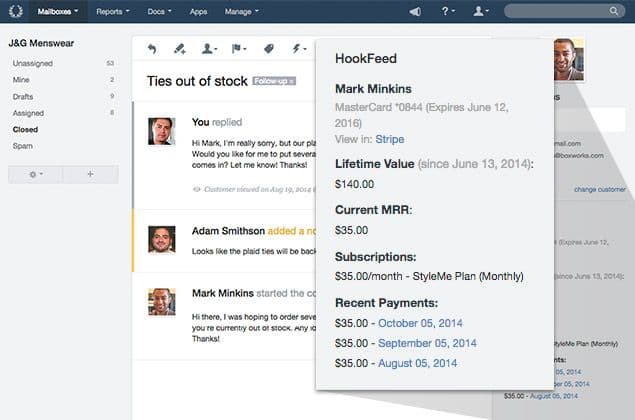
13. Communicate your status.
In 2006, now-Github employee Devin Reams posted a harangue on his blog: “MySpace Downtime Sucks.” In it, he bemoaned the latest 5-hour long stretch of unexplained downtime on “the world’s shittiest website” and asked a question that would soon be answered: “Who’s going to make the MySpace killer?”
Effective communication about downtime can be a huge factor in preventing long-term user dissatisfaction and churn. It may not be sexy, but it’s this kind of creative engineering as marketing that’s going to set you apart from the competition.
That’s why we now have status-pages-as-a-service, with companies like StatusPage.io offering custom-branded pages that let you clearly communicate what’s going on with your site with a personal touch.
For a demo of sorts, check out their free Better Error Pages tool which will let you generate custom 404, 503 and Maintenance pages.
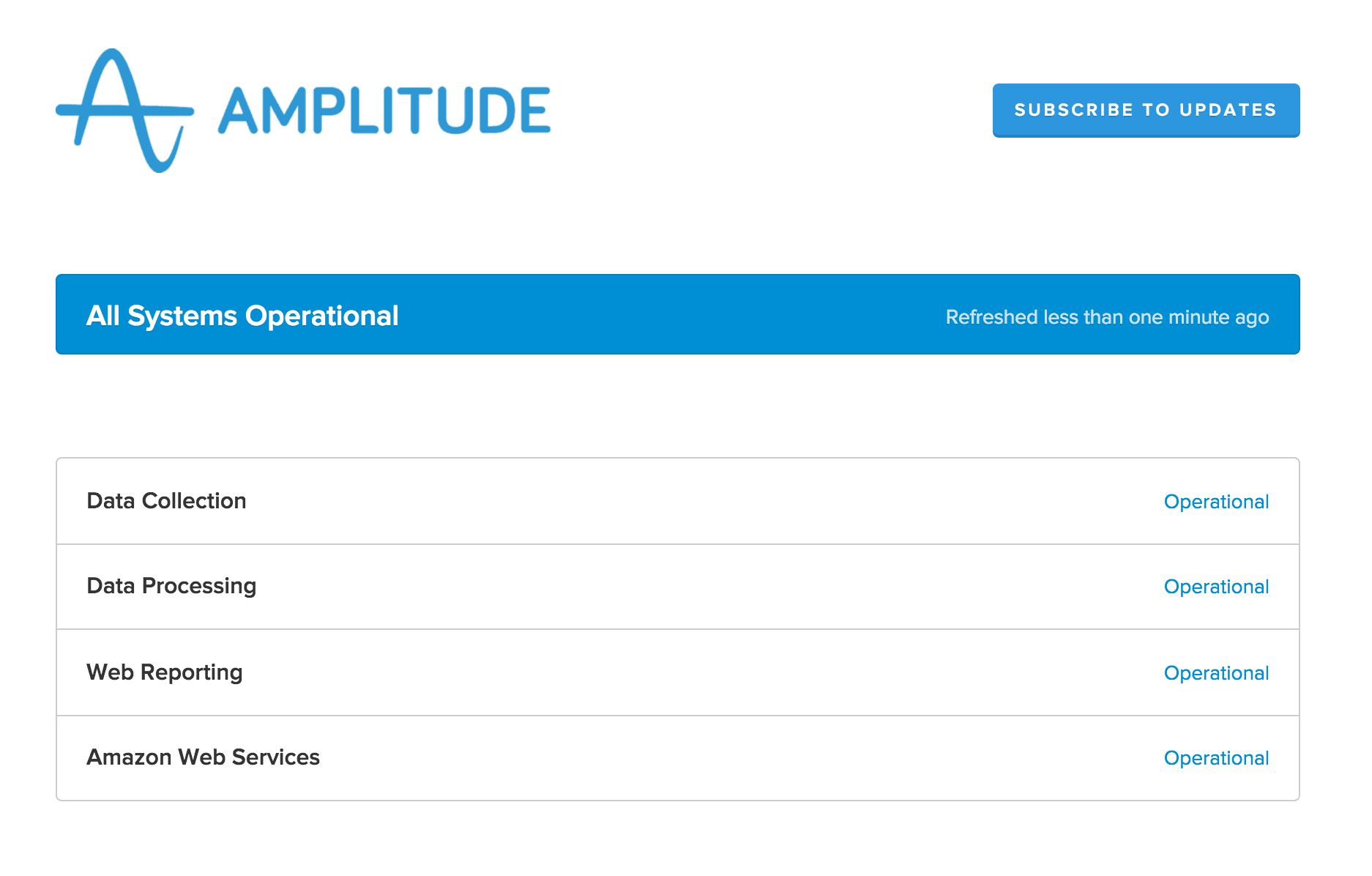
14. Send a nudge to users who are slipping away.
For a more personal touch to re-activation, send an email. Just don’t think you’re being original or interesting by typing “We miss you!” in the subject heading.
Instead, focus on getting people to re-discover the core value of your app with an open → click → activate → retain loop. Figure out what went wrong, then try and re-introduce some of the magic that they first signed up for.
To email any churning or near-churning customer and get a response, you need to make it personal.

To do this at scale, use an email marketing platform like Customer.io to segment and construct individualized messages at scale with liquid logic—the fancy brackets in the above image that represent actual user data.
15. Build a cancellation process.
At Price Intelligently‘s SaaSFest 2015, Lindsay Bayuk from Pure Chat talked about how important it is to see cancellation from the customer’s point of view. Keep it in the front of your mind that something has gone wrong, and you’ll have a better chance of finding out why.
Everyone loves a frictionless user experience, but if you want to learn anything about your cancellations, it’s critical not to be entirely frictionless.
When you try to cancel your Pure Chat subscription, you’ll see three different options: a live chat, a link to the support documentation, and a “pause subscription” feature. If you really want to cancel your subscription, the button is available, but it’s just one among several options designed to give a range of ways to remedy the problems that brought you to this point.
Whatever you do, definitely do not hide the cancellation button. That’s the kind of nefarious tactic that only slides for entrenched telecoms, like Comcast. Try to pull that as a startup and prepare to be pilloried. Handy learned this lesson the hard way.
Communication
Reaching out to your users directly is a double-edged sword. Do it wrong, and you can annoy and frustrate people. Do it right, and you can give people a good reason to stick around. Build processes that will encourage the latter kind and suppress the former, and you’ll start building your way towards incredible growth.
16. Fewer but better push notifications.
If you can make a convincing case for a why a particular push notification needs to be sent, why it needs to be sent at a certain time, and how it will advance the core value of your app, then send it! Netflix does this to great effect: House of Cards got nominated for 13 Emmy awards, and now I know the new season is available for me to watch for free on any device I want. That is information I want.
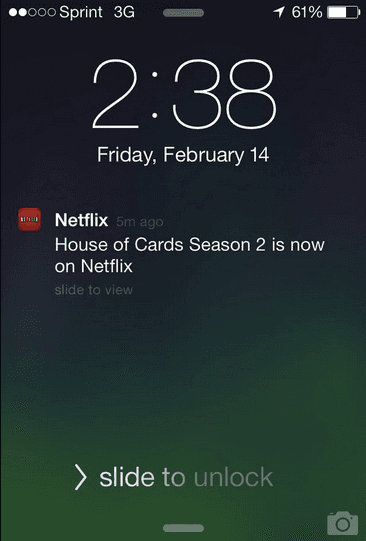
Of course, the vast majority of push notifications are annoying nuisances.
To really figure out how to make good ones, download some new apps and turn on all your push notifications. Then try and work, or maybe go for a walk. You’ll find out very quickly which push notifications are aggravating, which are so bad they drive you to uninstall, and which few actually hit the mark.
17. The personal follow-up
When it comes to the problem of converting, say, your free trial users into paying customers, Steli Efti at Close.io recommends picking up the phone and giving each and every one of them a call.
“But I’m just going to get a bunch of voicemails,” you think. True. That’s why you need to call them within 5 minutes of them signing up for the free trial.
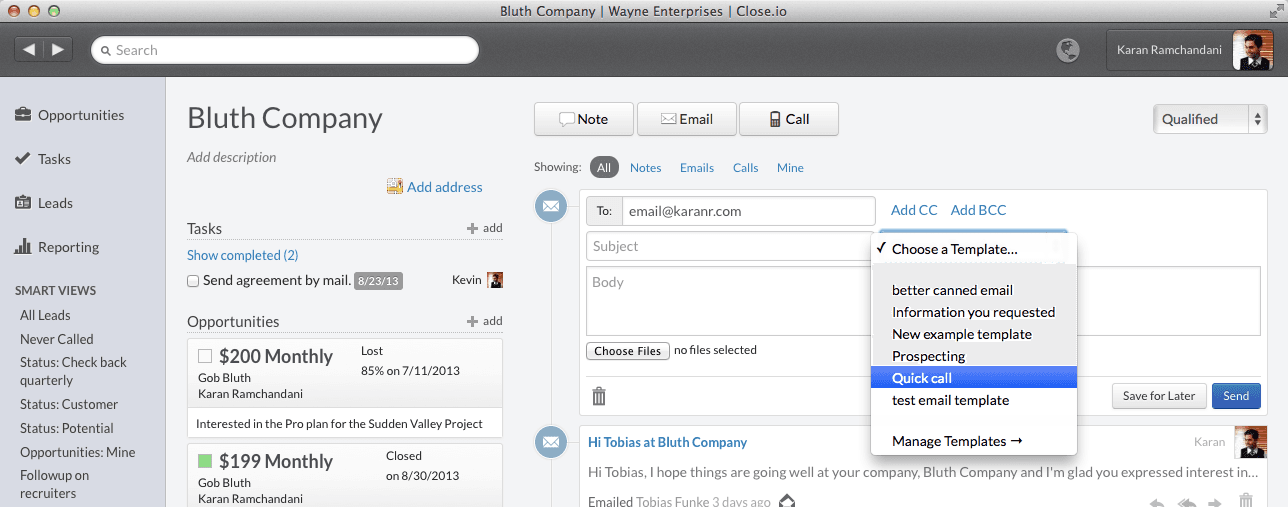
That way, you get in touch at a time when they’re extremely likely to be available for a phone call. Wait any longer and you might miss them—after all, who would start a free trial of a new sales management software on public transportation, or while driving through a tunnel?
Close.io makes a product that’s designed for this kind of quick-hitting, personalized interaction with customers—you can see the context and content of all prior discussions and make fast, recorded, and transcribed VoIP calls to follow up.
18. Referral programs
Successes stories like PayPal and Dropbox have some entrepreneurs convinced that extreme virality (a k-factor) above 1) is the only way to win at referral, but there are plenty of companies out there flying under the radar with programs that are reliably compounding their sales numbers without getting a single mention in TechCrunch.
In fact, any improvement to your referral program is going to seriously rebound through all of your marketing channels. Thanks to the particular math of non-viral referral and its “amplification factor”, even a tiny boost can have big effects— thousands of new users over the course of a month from a simple .05 boost to your k-factor, for instance.
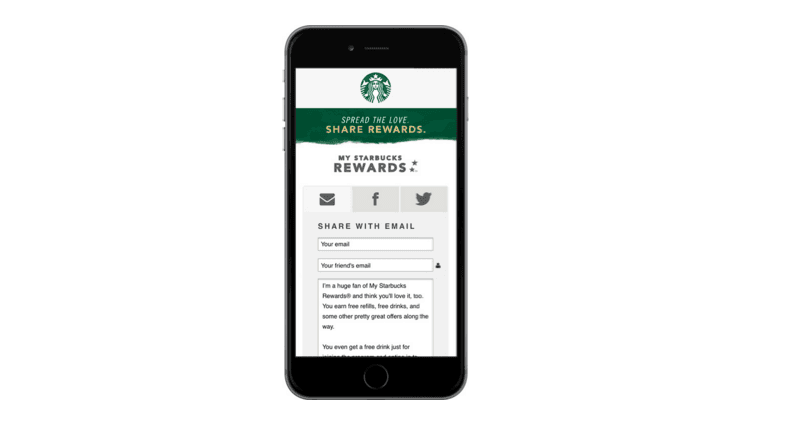
Once those users have been acquired, a solid referral program will also help you retain them. Because we’re naturally inclined to avoid cognitive dissonance, we’re not likely to refer your product to others and then stop using it. What would that say about the products we recommend?
With a Referral-as-a-Service product like Extole, you can use pre-built, cross-channel, sharing templates and a complete analytics setup to get your referral program running with minimal work from your engineering team.
19. Pick the right time to ask for an app store review.
There are so many bad times to ask your users for an App Store review—after it’s just crashed, after they open it for the first time, even when they’re really engaged.
Choose wrong, and your user retention rates can plummet, according to a study from IPG Media Labs. Though you might think the best time to ask for a rating is when users are most exposed to your core value, interrupting flow is is a bad idea. Not only are you more likely to get bad reviews, you can convince an ambivalent user that it’s time to churn.
Instead, ask for reviews after your users have achieved something. That way, you won’t be interrupting anything, and you’ll also reap some residual psychological goodwill.

20. Re-engage with ads.
Facebook is more than a place for you to advertise—it’s a place for you to re-activate your users. If you’re losing users out of apathy or forgetfulness, then it makes sense to go to them where they’re most likely to be found, and in 2016, that’s still Facebook.
People might be too busy to log in to your app, but it’s unlikely that they’re too busy to check Facebook. To re-activate, you just follow the same procedure you would to set up an ad campaign, and don’t worry too much about cost: research on mobile app retargeting has shown that it’s 95% cheaper to re-engage a dormant user than it is to acquire a new one.
AdEspresso is an ad optimization service designed specifically to take advantage of Facebook’s extensive targeting system, so you can pick the exact segment of dormant users you want to target and iterate on the copy and imaging until you craft the perfect re-activating message to get them back to your app. All you have to do is take a list of your customers and feed it into your Facebook Ads account:
Then Facebook will target your ads only to your dormant users, putting you back in their heads. Making a great re-activation ad won’t just help with churn either—because of the way the algorithm works, a better ad will actually influence what your Facebook ads cost.

Comments
Ramin: Great read! 🙂

Aditya Vempaty
Former Head of Marketing, Amplitude
As the former head of marketing at Amplitude, he had the privilege of hiring and leading a fantastic team of marketers, designers, and content folks to build a marketing engine that resulted in increasing revenues by 400% in 15 months.
More from Aditya
